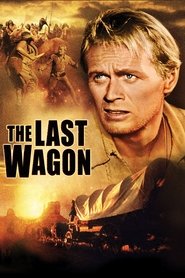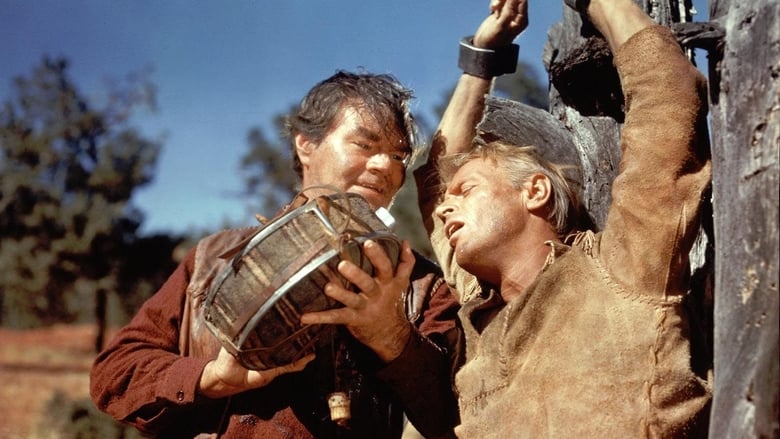“The Last Wagon” is a 1956 western film about a group of prisoners who are being taken to trial. When their wagon is attacked by Indians, they must band together to survive and reach their destination. The film explores themes of redemption, survival, and the dichotomy between law and order and justice. It is a classic tale of man versus nature, with stunning visuals and intense action sequences that will leave you on the edge of your seat.

CLICK HERE🠣🠣🠣👉🏼_Watch The Last Wagon 1956 English Subtitles_
Review
Have you ever watched a movie that leaves you feeling like you’ve just witnessed a masterpiece? “The Last Wagon,” directed by Delmer Daves, is one such film.
The storyline revolves around a group of pioneers traveling to the west on a wagon train. When they are ambushed by a Native American tribe, only seven survivors remain, including the group’s leader, Comanche Todd. As they continue their journey towards safety, they face various challenges, including betrayal and physical obstacles.
One of the most remarkable things about this movie is how it portrays Native American characters. Comanche Todd, played by Richard Widmark, defies the stereotypical portrayal of Indigenous people in western movies. He is not portrayed as a bloodthirsty savage but as someone who is deeply affected by his past and genuinely cares for his fellow travelers’ safety.
The cast comprises many well-known actors from the era, including Nick Adams as Billy Lee, Susan Kohner as Jenny Coates and James Drury as Johnny. Everyone delivers an outstanding performance that pulls you into the narrative and keeps you invested until the very end.
The dialogue in “The Last Wagon” contains some of the most profound lines in western cinema history. For example, when Todd tells one of his fellow travelers to “look with your heart,” he conveys a message that can be applied to life beyond just this movie.
Despite being released over sixty years ago, “The Last Wagon” remains popular today due to its nuanced portrayal of characters and themes that still resonate with modern audiences. The movie encourages viewers to reflect on questions related to power dynamics between different communities and what it means to survive in challenging circumstances.
When it comes to filming locations and score, “The Last Wagon” excels once more. The film was shot entirely on location in Arizona’s Sonoran Desert near Tucson, giving it an authentic feel that cannot be replicated on sound stages. Add to that the haunting score by Lionel Newman, and you have a movie that hits all the right notes.
It’s surprising that “The Last Wagon” only received one Academy Award nomination, considering how well it was received by both audiences and critics. Richard Widmark, who played Comanche Todd, was nominated for Best Actor. Though he didn’t win the award, his performance is still remembered today as one of the most outstanding in western cinema.
What makes “The Last Wagon” so engaging is how it blends genres seamlessly. It’s not just another western; it’s also a drama and character study that tackles important themes such as survival, redemption and understanding different cultures.
Critics praised Daves’ direction and the movie’s technical aspects, including editing and cinematography. With the help of his crew, Daves was able to create a visually stunning film that immerses viewers in its world.
One of the most iconic scenes in “The Last Wagon” is when Comanche Todd faces off against another character named Dutch Henry. The tension between the two characters is palpable thanks to Widmark and Neville Brand’s performances. With guns drawn and sweat trickling down their faces, they exude an energy that few actors could match.
Even though “The Last Wagon” doesn’t rely on special effects to tell its story, some sequences are genuinely awe-inspiring. The scene where Todd saves a family from quicksand is an example of how practical effects can still be impactful if executed well.
Finally, no discussion about “The Last Wagon” would be complete without mentioning Delmer Daves’ contributions to western cinema. He directed some of the genre’s most significant films during his career, including “3:10 to Yuma,” which is often considered one of the best westerns ever made.
In conclusion, “The Last Wagon” is a must-watch for anyone who loves cinema. It’s a movie that defies expectations and delivers a story that stays with you long after the credits have rolled. With its brilliant performances, breathtaking visuals, and thought-provoking themes, it’s no wonder that it remains popular more than six decades after its release.
Technical Data

- Runtime : 99
- Release : 1956-09-21
- Genre : Western
- Cast : Richard Widmark as Comanche Todd, Felicia Farr as Jenny, Susan Kohner as Jolie Normand, Tommy Rettig as Billy, Stephanie Griffin as Valinda Normand
- Crew : Lyle R. Wheeler as Art Direction, Chester L. Bayhi as Set Decoration, Walter M. Scott as Set Decoration, Lionel Newman as Original Music Composer, Hugh S. Fowler as Editor
- Popularity 9.949
- Budget : 0
- Revenue : 0
- Company : 20th Century Fox
- Summary : When a handful of settlers survive an Apache attack on their wagon train they must put their lives into the hands of Comanche Todd, a white man who has lived with the Comanches most of his life and is wanted for the murder of three men.
- Tagline : Nothing Could Stop the Last Wagon From Coming Through!
